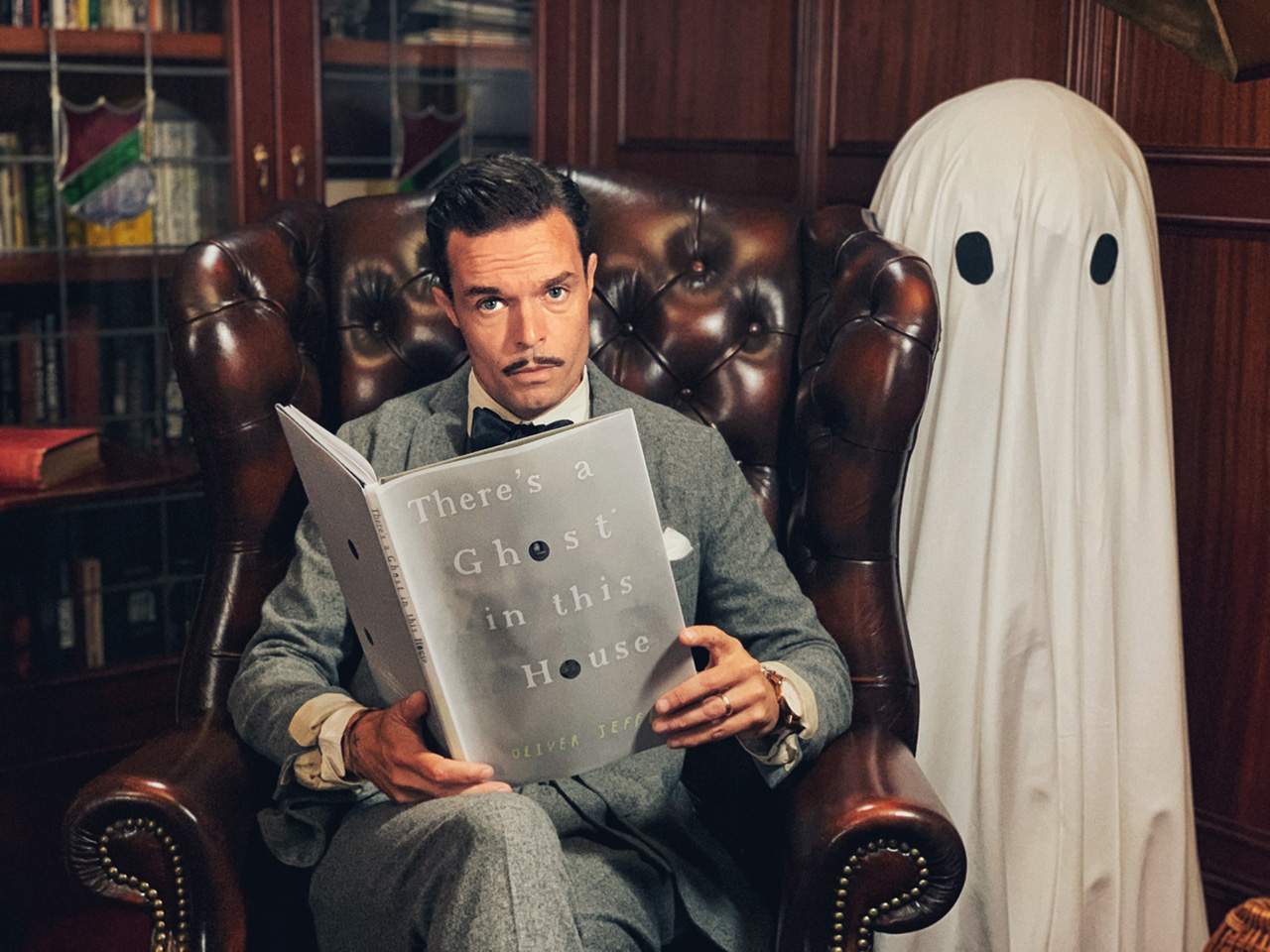Author Q&A: Oliver Jeffers
There’s a Ghost in this House
(Harper Collins Children’s Books)
Have you ever seen a ghost? The young girl in this haunting new picture book hasn’t, although she suspects they might exist. As the nights draw in, young readers are invited to join her in a hunt for her elusive housemates. There’s a Ghost in this House is the latest instalment from author, artist and illustrator Oliver Jeffers.
Tell us about There’s a Ghost in this House.
The new book is a ghostly game of hide and seek. The aesthetics of it are of an old classic ghost story with stereotypical white-sheet ghosts in various rooms created from photographs of old houses, sourced from places like architectural research books and catalogues. I’ve always worked in collage so whenever I’m at a car boot sale, a yard sale or an estate sale – living in New York it’s incredible what people throw away – I would collect them, thinking, that will come in handy one day. They looked like the empty scenes for something and that’s the backdrop for the tour of this house. It’s from the first-person perspective of a young girl who lives in this house and has for a very long time.
Your last two books, Here We Are and What We’ll Build, addressed some big themes. Did you want to bring children some light relief this time or does There’s a Ghost in this House have some bigger concerns lurking in the shadows?
A bit of both. There’s definitely an undercurrent of this idea that you can want something so much that you can never actually get it and almost resign yourself to the idea that you never have full control or full understanding. When I was working with organisations like the UN on climate and social responsibility following Here We Are, people would ask what I was working on next and I was like: “Er, a ghost book.” It’s a funny juxtaposition because it is just good old-fashioned entertainment in some ways.
The book is funny and sweet but also genuinely unsettling. How did you capture that balance?
There was no real checklist. I think the inherent tone of my book is charming and humorous – that was coming through in spades and I was questioning whether it did enough justice to the genre of ghost books. Is it creepy and scary enough? But there is a bit of darkness and eeriness there now, with ghosts appearing in the mirror behind the girl and things like that.
What was the inspiration behind it?
There wasn’t one particular moment of “Bingo! This is the story.” It was a matter of various things coming together. I love painting these old ghosts into old rooms and, when you paint that ghost onto tracing paper, you can move it around, which is always a lot of fun. Another aspect was the notion of this first-person tour through a house and not being able to find something that’s right in front of you. Slowly over time these two things began to merge. At the very start, I wasn’t sure who the ghost was, but the unlocking moment came through Neil Gaiman. I was running into this conundrum and I put it to him. He misunderstood the question and came back with something totally different. He thought that the ghosts were deliberately hiding, which is not something that I had intended but I thought, actually, that will really work. That was the key to picking the lock and breaking into this old abandoned house.
Do you know who the ghost is now?
No, I don’t. In some ways the best stories that you create are ones you are only partially responsible for and they’re completed in the minds of viewers. A story doesn’t always have to be complete with a neat wrapping up of a bow. In fact, looking back through a lot of my books, it seems to very much be the case that they’re not fully resolved. They don’t just end – there’s always the suggestion of more and that’s definitely the case in this one.
You’re planning events in New York and London around Halloween to tie in with this book. What do you think Halloween and ghost stories allow children to explore?
It’s the thing Roald Dahl touched on – this ever so slight darkness that children gravitate towards because they know they’re not supposed to. It’s a chance to dress up and speak about ghosts and monsters, and kids just love that stuff. It’s all in the imagination. It’s a chance to safely play in the realm of the dark and spooky. Halloween is actually more Irish in its origins than St Patrick’s Day, which a lot of people aren’t aware of.
Do you believe in ghosts?
Let me put it this way: the basic principle of science is that energy cannot be destroyed, it can only be transferred, and I think that there must be some truth to the idea that people have an energy field around them – good energy, bad or whatever that is. I think we’re naive if we think that we have figured out all of the rules of energy, matter and science.

Leave a reply
Your email address will not be published.